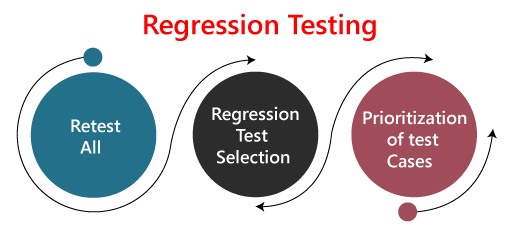Regression Testing
The purpose of regression testing is to ensure that changes made to software, such as adding new features or modifying existing features, have not adversely affected features of the software that should not change. Running some or all of the test cases created to test modifications in previous versions of the software usually performs regression testing.
SVIT Consulting UK’s regression testing utilizes the proven methods and processes to ensure new releases, updates or patches do not compromise your systems’ quality. With our flexible staffing regression testing is done quickly when unintentional fault occur during development can rectify through regression testing from the initial state to end state.
Regression testing of batch applications, when executed manually, requires an added overhead of testing resources especially skilled in these applications. Also, there is an enormous overhead in terms of the cost of maintenance, impeding further enhancements in the application.

SVIT Consulting UK expertise’s in creating automating regression testing frameworks with all leading automation tools such as Rational Suite, Mercury Interactive’s QTP, Load runner, WinRunner, OpenSTA, etc., The key components of this framework are Test Case manager, Test Data Manager, Execution Engine, Impact Analyzer, Configuration Manager, Verification Manager and Report Engine. Some of the key features of automated framework include:
- Cost-effective and easy-to-maintain solution
- Rich features with limited manual intervention
- Ability to leverage existing skill-set of resources
- Comprehensive reporting facility
